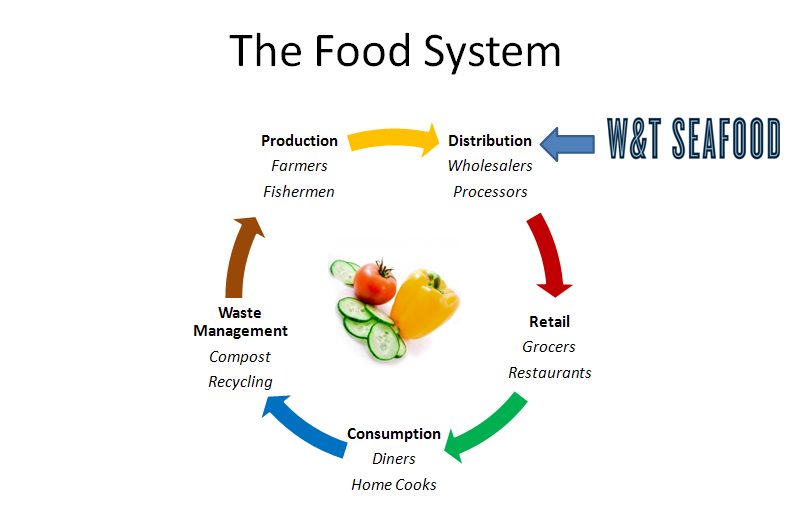Originally written for the Oyster Century Club, click here for more info on participating!
Rising summer temperatures were tightening shellfish supplies. Guests were in town to visit our warehouse. We were preparing materials for an oyster class that evening. And a pallet of oysters had mysteriously gone missing in transit. Just another day in seafood distribution.
Here at Element Seafood, we’re proud to be a family-run, regional seafood distributor. But what exactly does that mean? Ask the average person to name the primary actors in the food system, and chances are they’ll name farmers, retailers and consumers, but forget about distributors. However, distribution is a key element for getting food from farm to plate, one that cannot be ignored as our food system evolves to be more localized and responsive. In fact, New York City recently launched a study to determine how to establish stronger regional distribution solutions for small food producers.
Above, you can see the food system, and how products cycle through from farmers to distributors, to retailers, to consumers and finally to waste management systems. Element Seafood fits in at the second stage, and works hard to connect the right seafood producers with chefs, grocers and diners. We take field trips to visit oyster farmers, and seek out partners who care about the integrity of their products and work to create unique flavor profiles. Then comes the heavy lifting, as we tackle the logistics, paperwork, and permits required for shipping. Finally, our sales team knocks on doors to get products into the hands of excited chefs and diners in New York City, where we’re known for having a carefully curated selection of premium shellfish. It’s hard to believe we’ve been doing this for over 25 years, and some of our relationships with shellfish farmers stretch back over decades!
As growing demand, disease and climate change continue to put pressure on shellfish stocks, having robust distribution networks becomes even more important. For restaurants that need a steady supply of oysters year-round, relying on only one or two oyster farmers could be disastrous if that harvest area is hit with a red tide, or closed due to rainfall run-off. Distributors also provide ample variety for today’s discerning diners, and help balance abundance in times of seasonal or regional scarcity. That way, if oysters from more southern states have begun spawning, you can still enjoy oysters from British Columbia or Maine.
For our part, we strive to build low impact and sustainable distribution systems by supporting small-scale farmers and transporting foods as efficiently as possible, so that they reach your plate in pristine condition. So, the next time you slurp an oyster, consider the unsung distributor who may have played matchmaker between the farm and your plate!
